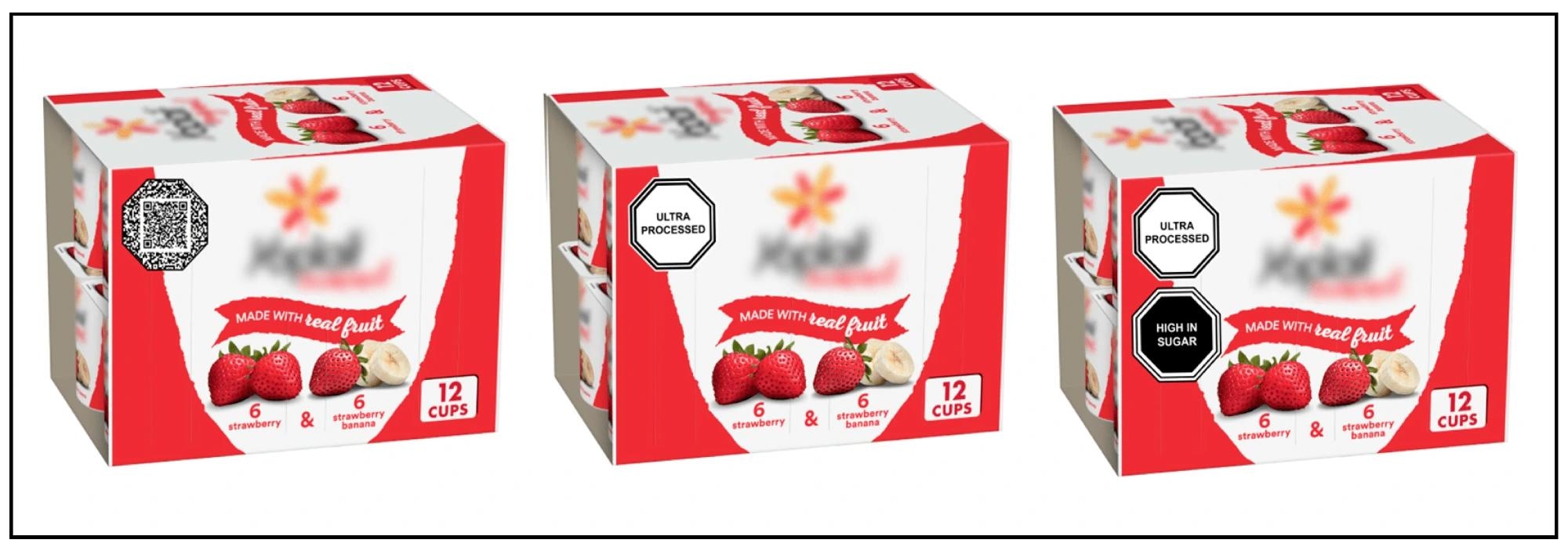In a recent study published in the journal Nutrients, researchers investigated how United States (US) adults perceive “ultra-processed” labels on food packaging and their potential to influence consumer behavior towards healthier choices.
 Study: How Promising Are “Ultraprocessed” Front-of-Package Labels? A Formative Study with US Adults. Image Credit: Drazen Zigic / Shutterstock
Study: How Promising Are “Ultraprocessed” Front-of-Package Labels? A Formative Study with US Adults. Image Credit: Drazen Zigic / Shutterstock
Background
Ultra-processed foods (UPFs), characterized by high processing and minimal whole ingredients, are prevalent in diets worldwide, especially in affluent countries like the US and the United Kingdom (UK). Despite their nutritional content, UPFs are associated with serious health problems such as heart disease, diabetes, and cancer, attributed to additives and processing methods that harm the body’s microbiome and food structure. While current front-of-package labels (FOPL) focus on nutritional content, there is an urgent need to include information about food processing levels. This reflects an evolving understanding of UPFs’ health impacts and the need for research on how “ultra-processed” labels might affect consumer choices and dietary habits.
About the study
In the present study, 600 US adults from an online Qualtrics panel evaluated product perceptions under three labeling conditions: control, “ultra-processed,” and “ultra-processed,” plus “high in sugar.” This within-subjects design aimed to understand the impact of novel “ultra-processed” labels versus traditional nutrient labels, using a popular yogurt brand to control for brand bias. The study, approved by the University of North Carolina at Chapel Hill’s Institutional Review Board, explored how these labels influence consumer perceptions, employing stringent criteria for participant eligibility and ensuring data integrity through Qualtrics’ platform features.
 Study stimuli (control label, “ultraprocessed” label, combined “ultraprocessed” and nutrient labels, respectively).
Study stimuli (control label, “ultraprocessed” label, combined “ultraprocessed” and nutrient labels, respectively).
Participants responded to questions assessing their attention to the labels, thoughts on the associated health risks, and the labels’ perceived message effectiveness (PME), with responses indicating the labels’ potential to discourage product purchase. The study also collected demographic data for analysis.
Analytical methods included post hoc power calculations and mixed-effects linear regression models to account for the within-subject design, using demographic characteristics as controls. The analysis aimed to detect minimal effect sizes and compare outcomes across different labeling conditions, employing Cohen’s d for effect size standardization and complete case analysis for handling missing data.
Study results
In the study examining consumer responses to food labeling, 600 participants with a mean age of 44.6 years were surveyed, where 74% identified as women. The demographic composition revealed 76% non-Hispanic white, 15% non-Hispanic Black, and 12% Hispanic participants. Educational attainment varied, with 29% having a high school diploma or less and 8% holding a graduate or professional degree.
To ensure the study’s integrity, the researchers checked if the sequence in which the participants viewed the labels was randomized properly to eliminate any bias from the order effects. A χ2 test confirmed that the visualization order of the labeling conditions was evenly distributed across the participants, showing no significant deviation (χ2 = 2.73, p > 0.05).
The study’s findings revealed varied responses to the labeling conditions. The “ultra-processed” label did not significantly capture more attention than the control label, with a negligible effect size (d = 0.04, β = 0.04, p > 0.05). However, labels that combined “ultra-processed” and “high in sugar” notices were found to be more attention-grabbing, scoring higher on average than the “ultra-processed” label alone (mean difference = 0.08, statistically significant with d = 0.07, β = 0.08, p < 0.05).
When it came to thinking about the risks associated with the product, the “ultra-processed” label alone prompted more contemplation (mean = 2.12) compared to the control (mean = 1.78, d = 0.24, β = 0.34, p < 0.01). This effect was even more pronounced with the combination of “ultra-processed” and “high in sugar” labels, leading to the highest levels of risk consideration (mean = 2.51 compared to the “ultra-processed” label alone, d = 0.26, β = 0.4, p < 0.01).
Regarding discouraging the purchase of the product, the “ultra-processed” label alone was more effective than the control label (mean = 1.99 vs. 1.62, d = 0.28, β = 0.38, p < 0.01). The discouragement increased further when participants were exposed to both “ultra-processed” and “high in sugar” labels, showcasing the highest level of purchase aversion (mean = 2.33 compared to the “ultra-processed” label alone, d = 0.22, β = 0.33, p < 0.01).
Conclusions
To summarize, the findings revealed that the “ultra-processed” label, especially when combined with “high in sugar” information, effectively heightened awareness of health risks and reduced purchasing intent among US adults. These results suggest that integrating processing information with nutrient content on labels could influence healthier consumer choices.
Journal reference:
- D’Angelo Campos A, Ng SW, McNeel K, et al. How Promising Are “Ultraprocessed” Front-of-Package Labels? A Formative Study with US Adults. Nutrients. (2024), DOI- 10.3390/nu16071072, https://www.mdpi.com/2072-6643/16/7/1072

 PARENTING TIPS
PARENTING TIPS







 PREGNANCY
PREGNANCY








 BABY CARE
BABY CARE








 TODDLERS
TODDLERS








 TEENS
TEENS








 HEALTH CARE
HEALTH CARE






 ACTIVITIES & CRAFTS
ACTIVITIES & CRAFTS








 CONTACT
CONTACT ABOUT
ABOUT


